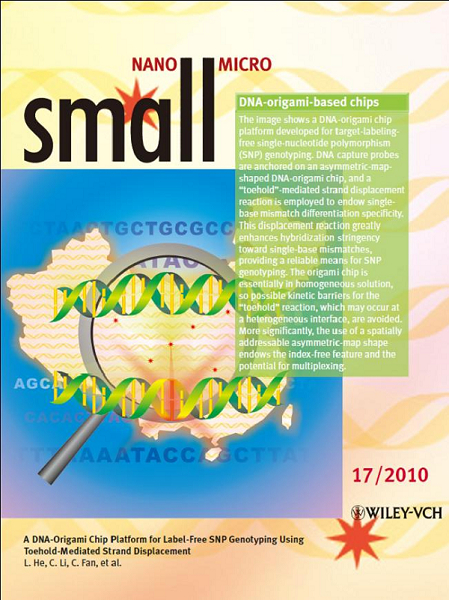






Map-Shaped DNA-Origami Chip Developed
A DNA nanotechnology-based solution-phase DNA chip, which can conduct DNA hybridization detection in solution, was developed with a shape of Chinese map.,. The main findings were published in Advanced Materials, 2010, 22, 2672-2675.
DNA nanotechnology makes it possible to bottom-up construct precise and uniform nanostructures using the unparalleled self-assembly ability of DNA molecules. DNA origami, developed by Prof. Rothemund from California Institute of Technology, is reputed to be a milestone for DNA nanotechnology. In principle, any nanoscale shape or pattern can be designed and fabricated via DNA origami. Initially, however, only symmetrical patterns were available.
DNA origami for asymmetrical patterns was designed by the research group on DNA computing founded in 2003 in Shanghai. For example, Dr. QIAN Lulu from the group constructed a “Chinese Map” in the form of an asymmetric DNA origami-based shape, marking another important step in DNA origami.
Based on the asymmetric and spatially addressable nature of the map, Dr. ZHANG Zhao from the group devised a spatially addressable and index-free solution-phase DNA chip whose signals could be read out via atomic force microscopy. He also employed strand-displacement reaction on the surface of the map-shaped chip to endow single-base-mismatch differentiation specificity, providing a new means of single-nucleotide polymorphism (SNP) genotyping. His findings were published as the cover article in Small, 2010, 6, 1854-1858.
The chip was co-developed by Laboratory of Physical Biology under Shanghai Institute of Applied Physics, Chinese Academy of Sciences and Bio-X Center, Shanghai Jiaotong University.
